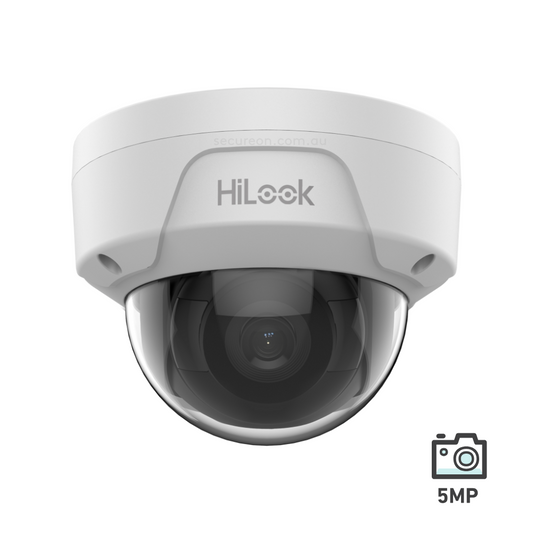Night Vision Security Camera FAQs
Security cameras are essential for safety and peace of mind, but their effectiveness is significantly impacted by their ability to function in low-light conditions. This blog post will explore the two main types of night vision security cameras: infrared and colour.
Infrared night vision cameras
Also known as IR cameras, these cameras use infrared light invisible to the human eye to illuminate an area. This technology enables these cameras to capture black and white footage with greater detail than colour night vision cameras, even in complete darkness. While they excel in capturing details, they lack the ability to record colour information, which could be crucial for identifying individuals or vehicles.
Colour night vision cameras
Colour night vision cameras provide the advantage of colour footage, which can be invaluable in identifying clothing colours, vehicle colours, and other details that could be crucial for investigations. However, these cameras rely on ambient light to function, and their effectiveness diminishes in low-light conditions. In scenarios with limited ambient light, colour night vision can result in blurry images, especially when trying to capture finer details like facial features.
When choosing between these two types of night vision cameras, consider the lighting conditions of the area you want to monitor. If the area is completely dark, an infrared camera is the better option. However, if there is some ambient light, a colour night vision camera may be a better choice if colour information is important.
1. What are the different types of night vision security cameras?
There are two main types: infrared (IR) and colour night vision.
- Infrared cameras produce sharp black and white images even in complete darkness by using invisible infrared light to illuminate the scene.
- Colour night vision cameras capture images in colour, providing more visual information but often requiring some ambient light to function effectively. These cameras might not perform well in complete darkness.
2. How does camera sensor size affect night vision quality?
The larger the sensor, the better the night vision. A larger sensor can capture more light, resulting in brighter and more detailed images, especially in low light conditions. When comparing sensor sizes, remember that fractions of an inch are used, so a smaller number indicates a larger sensor (e.g., 1/1.8" is larger than 1/3").
3. Is a higher resolution always better for night vision?
Not necessarily. While higher resolution provides more detail during the day, it can be detrimental at night. A higher resolution means more pixels are crammed onto the sensor, resulting in less light per pixel and potentially a darker image. For optimal night vision, a 4MP (2K) resolution is often a good balance between detail and low-light performance.
4. What is Smart IR and why is it important?
Smart IR technology adjusts the intensity of the infrared light emitted by the camera depending on the distance of the object being viewed. This prevents objects close to the camera from being overexposed and washed out, ensuring a clearer image.
5. Why is my security camera blurry at night?
Blurry images of moving objects at night can be caused by a slow shutter speed. A slower shutter speed allows more light in but can make moving objects appear blurry. Some cameras allow you to adjust the shutter speed, but adding more lighting to the scene can also help.

6. Can infrared night vision see in complete darkness?
Yes, cameras equipped with infrared night vision can "see" in complete darkness as they illuminate the scene with infrared light invisible to the human eye. Colour night vision cameras, however, require some ambient light to function.
7. How can I improve the night vision of my cameras?
Several ways to improve night vision include:
- Ensure the camera is positioned correctly. Avoid pointing it directly at walls or eaves, as this can cause IR bounce-back, leading to overexposed areas and darkened backgrounds.
- Add more lighting. Supplementing the existing light with outdoor lighting, IR illuminators, or cameras with built-in white light LEDs can significantly enhance night vision.
- Choose cameras with larger sensors and Smart IR technology.
8. What should I do if my camera shows a pink image at night?
A pink image usually indicates a problem with the IR cut filter, which switches between colour and IR modes. This could be due to various factors such as cold weather, dirt, or software glitches. Try rebooting the camera, updating its firmware, or gently tapping it to dislodge the filter. If the problem persists, consult us on 1300 888 767, contact us or contact a professional of your choice.
























